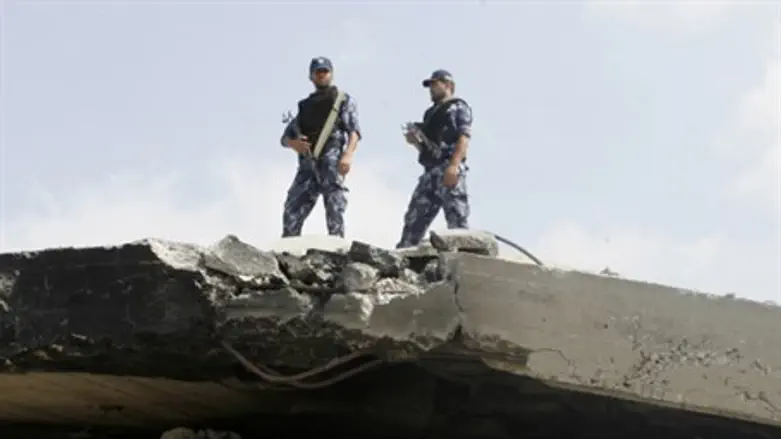
The IDF is preparing for the possibility of a fourth Hamas terror war from Gaza, drawing on the lessons learned in Operation Protective Edge in the summer of 2014.
A senior IDF officer in the Southern Command on Thursday said that the army is running drills to prepare for combat against Hamas forces.
"Since the end of the operation we are training and preparing for all the threats. Hamas is busy building its forces and we are busy planning the next battle, in which we will without a doubt hit them hard enough so that the deterrence will last for many years," he said.
The officer noted that "lessons were learned and everything that required treatment was done."
He detailed the lessons learned as including: "the issue of evacuating towns adjacent to the (security) barrier, transferring the headquarters and staging grounds (for entry to Gaza - ed.) deep into the territory, operating the warning system and establishing combat teams to secure the towns in order to give a defense response, all while conducting an offensive which is the most important thing in any battle."
According to the senior officer Hamas' "military branch," the Al-Qassam Brigades, has increased its strength, and the security establishment estimates that it includes around 20,000 terrorists.
Of that number a quarter are thought to be members of special forces units, such as naval commandos. The rest are infantry fighters, those manning more short-range weapons and other various levels of terrorists.
"Today we have very detailed information on each of the 25 battalions, so that every one of our battalion commanders or company commanders is familiar with the enemy facing them at an updated level," explained the senior source.
Internal disputes dividing Hamas
Since the end of Protective Edge no fewer than 35 rockets have been fired at sovereign Israeli territory from Gaza, despite the ceasefire that ended the last operation. The IDF says that none of the 35 rockets were fired by Hamas.
"The (Hamas) organization is deterred, challenged by the rebellious sources in the (Gaza) Strip like Da'esh (Islamic State) cells, the Popular Front (for the Liberation of Palestine), groups of global jihad and more, (all of which) try to create provocations by firing (rockets) and (placing) explosives that in the end will lead to an Israeli strike on Hamas facilities and members," said the officer.
The IDF is also taking into account the internal disputes within Gaza and Hamas, he said, noting that "the disputes between Hamas and the Iranians and the Egyptians remain unchanged, and also inside Hamas there is a reality in which the Hamas chief of staff Mohammed Deif doesn't see eye to eye with (Ismail) Haniyeh and his friends."
"There is an internal war between the military arm of the organization and its diplomatic arm, and we are keeping an eye on it. The fact that Yahi Anwar, who was released in the (Gilad) Shalit deal, became one of Hamas' three military leaders next to Marwan Issa shows that everyone in Hamas acts differently. That challenges us."
Turning his attention to the Islamic State (ISIS) presence in the Sinai Peninsula, the IDF officer said that Sinai Province - as the group calls itself - primarily acts against Egypt, and in just the last year alone over 350 Egyptian security force members were killed.
"They have advanced weapons, they are also the ones responsible for bringing down the Russian plane, there are around 1,000 of them and there is no doubt that their next goal is Israel, and therefore we must prepare for it," said the source.
He added that while Hamas is disappointed that the security situation in Judea and Samaria appears to be stabilizing somewhat, the terror group is dealing with internal and external tensions and a high level of unemployment in Gaza, and therefore it doesn't intend to conduct attacks against Israel at the current time.
